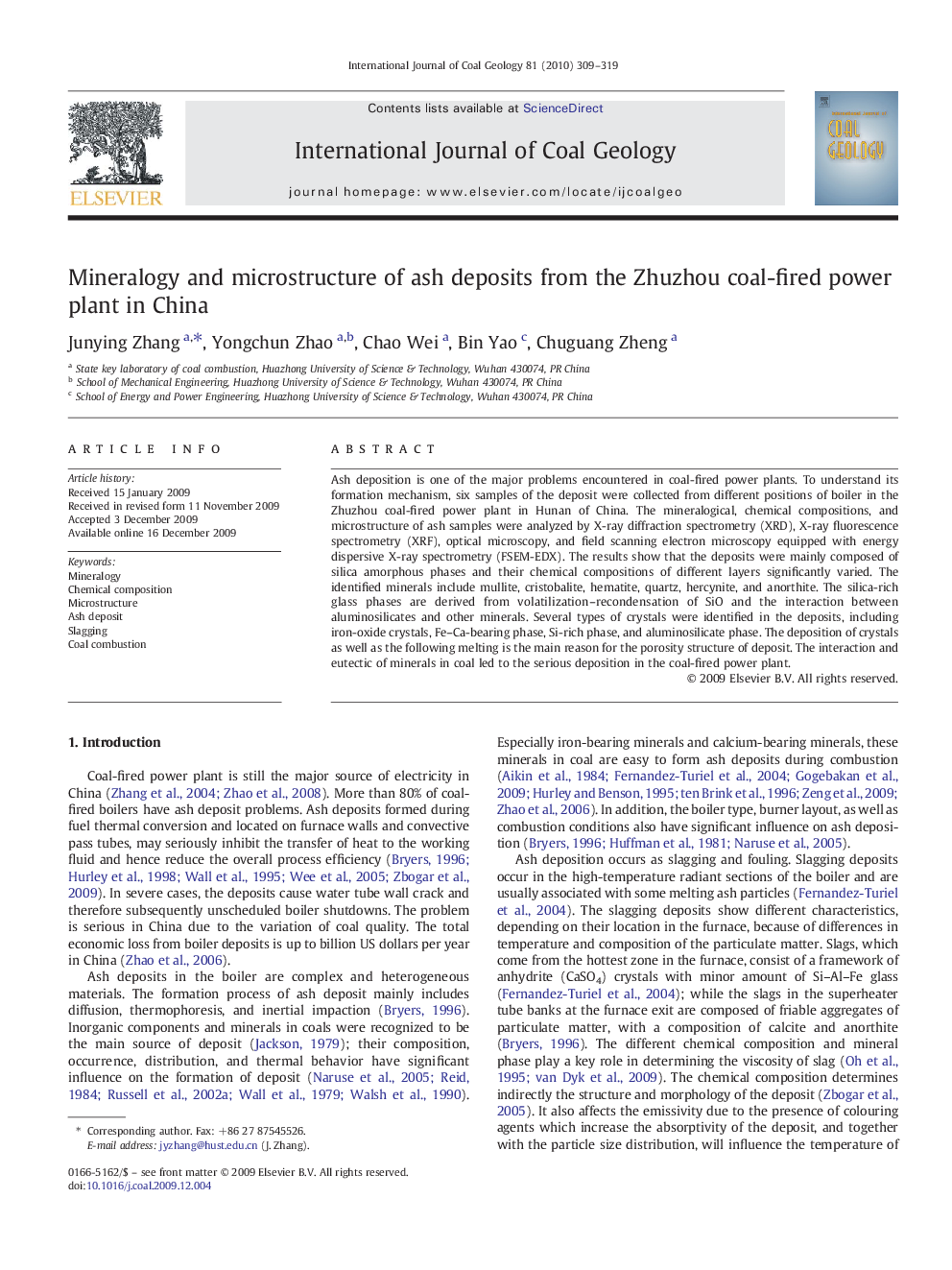| Article ID | Journal | Published Year | Pages | File Type |
|---|---|---|---|---|
| 1753807 | International Journal of Coal Geology | 2010 | 11 Pages |
Ash deposition is one of the major problems encountered in coal-fired power plants. To understand its formation mechanism, six samples of the deposit were collected from different positions of boiler in the Zhuzhou coal-fired power plant in Hunan of China. The mineralogical, chemical compositions, and microstructure of ash samples were analyzed by X-ray diffraction spectrometry (XRD), X-ray fluorescence spectrometry (XRF), optical microscopy, and field scanning electron microscopy equipped with energy dispersive X-ray spectrometry (FSEM-EDX). The results show that the deposits were mainly composed of silica amorphous phases and their chemical compositions of different layers significantly varied. The identified minerals include mullite, cristobalite, hematite, quartz, hercynite, and anorthite. The silica-rich glass phases are derived from volatilization–recondensation of SiO and the interaction between aluminosilicates and other minerals. Several types of crystals were identified in the deposits, including iron-oxide crystals, Fe–Ca-bearing phase, Si-rich phase, and aluminosilicate phase. The deposition of crystals as well as the following melting is the main reason for the porosity structure of deposit. The interaction and eutectic of minerals in coal led to the serious deposition in the coal-fired power plant.
